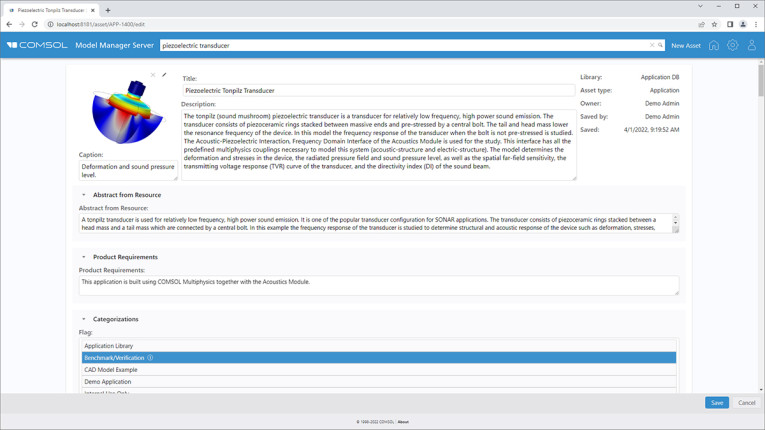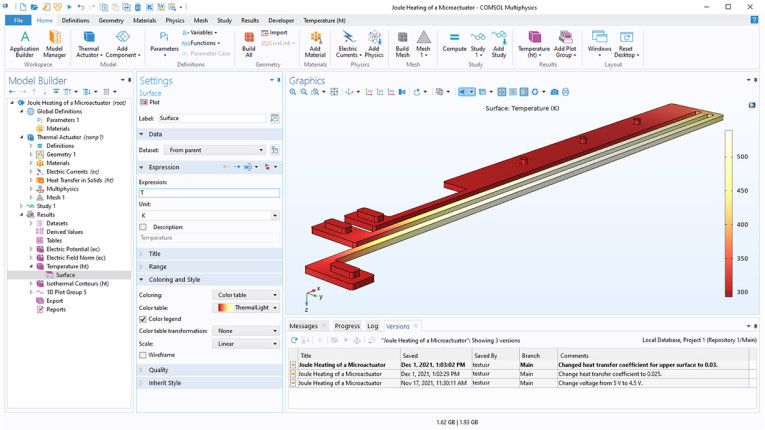Through two decades of development, COMSOL Multiphysics evolved from a software that solved partial differential equations to one that defines the nature of multiphysics modeling: being able to build models with any combination of physics phenomena via the Model Builder. Thereby, engineers versed in the underlying physics and using software to build models began using COMSOL Multiphysics across technology-driven industries, academia, and research organizations for modeling and simulation. Next, COMSOL introduced the Application Builder and concept of simulation apps to expand the realm of who could access simulation to include those who had not traditionally been able to work with models and simulations.
Now, COMSOL completed the environment for managing modeling and simulation projects for product and process design through the recently introduced Model Manager and the Model Manager server with its accompanying asset management system.
Released in December 2021, the Model Manager allows you users to search through models for particular parameter names and feature strings, while also tracking model development through version control with model comparison and merging capabilities. With the Model Manager users can also upload, link, and administrate supplementary and auxiliary files to a modeling and simulation or development project.

“As an extension of the COMSOL Multiphysics simulation platform, the Model Manager server's asset management system is useful for administrating and managing your models, apps, and simulations in a corporate network environment set up to your own liking,” says Sr. VP of Sales Phil Kinnane. “This could be project-based, model-based, team-based, or similar, according to how you want your organization to structure and organize such work.”


“I think organizations will start by moving the tens and hundreds of COMSOL models they have been developing over the years to their asset management systems as a communal model library,” adds Kinnane. “Instead of chasing down the many engineers using the software for different purposes, they can now find and search through those models as a centralized repository instead.”
COMSOL CTO Ed Fontes describes how the Model Manager server will take an organization’s simulation-driven project to the next level: “The true power of the Model Manager is not only in its ability to manage your simulation data, but in being able to version control and audit your actual model-building process.” He adds, “there are a number of simulation data management systems out there, but COMSOL has focused the Model Manager on the model-building process, such as to easily browse through the model tree of certain models or search for specific features like domain settings, boundary conditions, or study types to revisit, update, or even reuse.”
Internal or external clients to an organization using COMSOL software, may also use the database system to keep track and use results from a project. They may also use simulation apps and provide feedback about their measurement and test data by uploading them and reports to the relevant asset. And, of course, contributors on the model development can also add their auxiliary data, such as CAD files and specifications, to the project. “In all,” says Fontes, “the Model Manager server and asset management system truly provide the complete working environment for modeling and simulation projects.”
www.comsol.com







